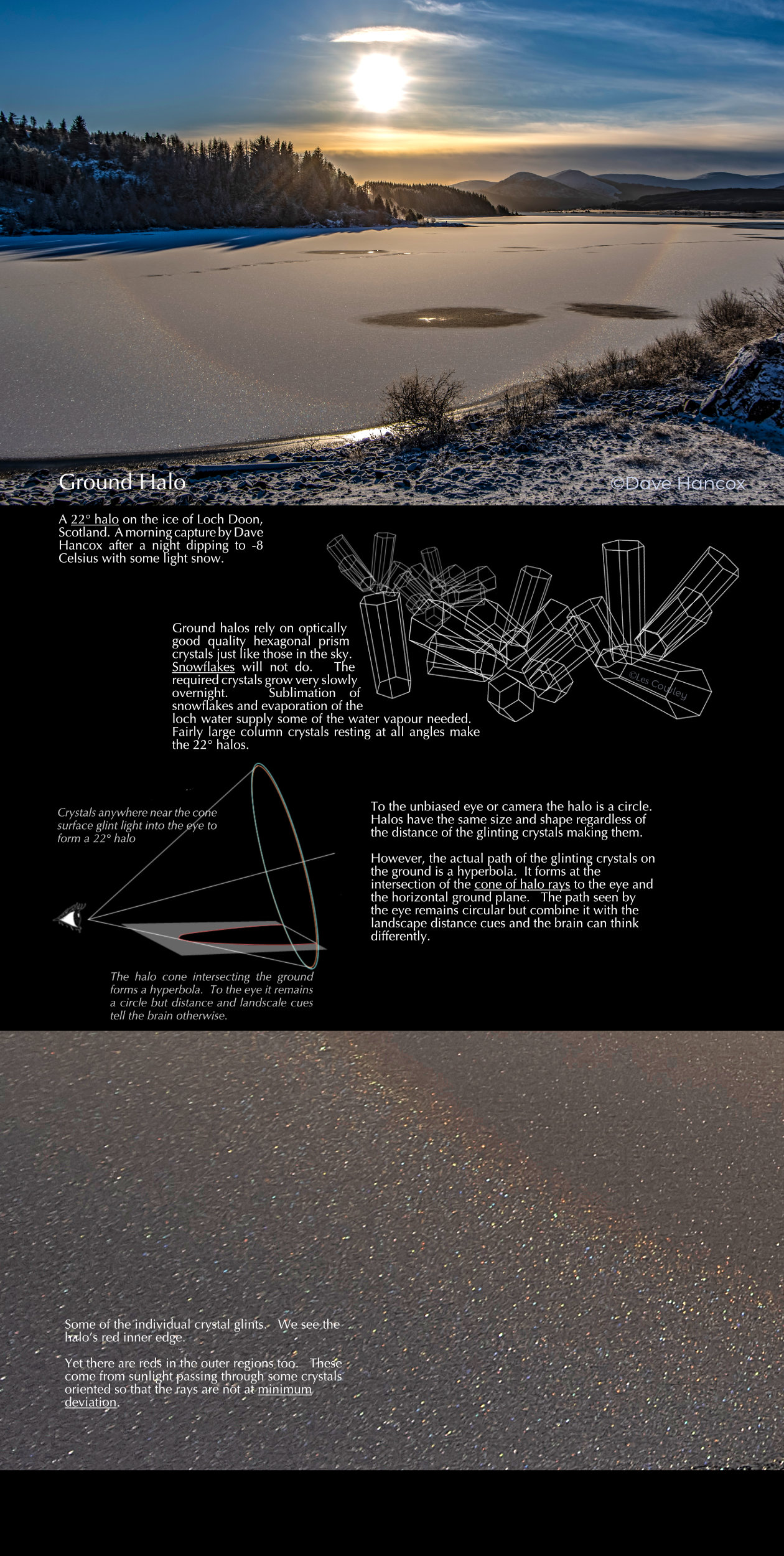Ground Halo - 22 degree halo
A 22� halo on the ice of Loch Doon, Scotland. A morning capture by Dave Hancox after a night dipping to -8 Celsius with some light snow
.?Ground halos rely on optically good quality hexagonal prism crystals just like those in the sky. Snowflakes will not do. The required crystals grow very slowly overnight. Sublimation of snowflakes and evaporation of the loch water supply some of the water vapour needed. Fairly large column crystals resting at all angles make the 22� halos.?
To the unbiased eye or camera the halo is a circle. Halos have the same size and shape regardless of the distance of the glinting crystals making them. ?However, the actual path of the glinting crystals on the ground is a hyperbola. It forms at the intersection of the cone of halo rays to the eye and the horizontal ground plane. The path seen by the eye remains circular but combine it with the landscape distance cues and the brain can think differently.?
Some of the individual crystal glints. We see the halo�s red inner edge. ?Yet there are reds in the outer regions too. These come from sunlight passing through some crystals oriented so that the rays are not at minimum deviation.


toptics
A
Highlights


